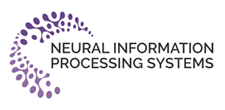
ΑΙhub.org
New technologies in the justice system – a UK Justice and Home Affairs Committee report

On 30 March 2022, the Justice and Home Affairs Committee published a report entitled “Technology rules? The advent of new technologies in the justice system“. In this document, the committee explores the use of Artificial Intelligence (AI) and other algorithmic tools in activities pertaining to the justice system in England and Wales.
The authors warn that the rate of development of these technologies is outpacing scrutiny and regulation. Chair of the Justice and Home Affairs Committee, Baroness Hamwee, said: “We welcome the advantages AI can bring to our justice system, but not if there is no adequate oversight. Humans must be the ultimate decision makers, knowing how to question the tools they are using and how to challenge their outcome.”
The report is available on the Committee’s webpage in both HTML and PDF formats. It is awaiting Government response, and, following this, will be debated in the House of Lords.
The report consists of the following sections:
- Introduction
- Legal and institutional frameworks
- Transparency
- Human-technology interactions
- Evaluation and oversight
- Summary of conclusions and recommendations
In the report, the Committee make a number of recommendations. We highlight some of these below:
- The Government should establish a single national body to govern the use of new technologies for the application of the law. The new national body should be independent, established on a statutory basis, and have its own budget.
- This new national body should systematically evaluate and certify technological solutions prior to their deployment.
- The Government has endorsed principles of artificial intelligence and should outline proposals to establish these firmly in statute.
- Full participation in the Algorithmic Transparency Standard collection should become mandatory, and its scope extended to become inclusive of all advanced algorithms used in the application of the law that have direct or indirect implications for individuals.
- Appropriate research should be undertaken to determine how the use of predictive algorithms affects decision making, and under what circumstances meaningful human interaction is most likely.
- Comprehensive impact assessments should be made mandatory for each occasion an advanced technological tool is implemented in a new context or for a new purpose. They should include considerations of bias, weaknesses of the specific technology and associated datasets, and consideration of the wider societal and equality impacts. Impact assessments should be regularly updated and open to public scrutiny.
Read the report in full










